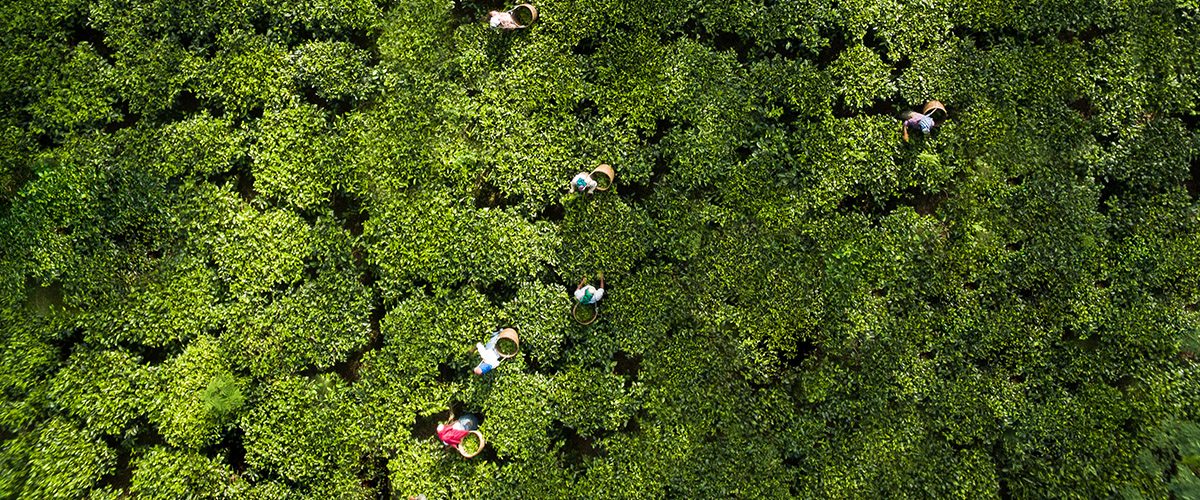There are several reasons why I would never refuse an invitation to Assam. As a tea man, it’s almost a place of pilgrimage, the state where the Indian tea industry began. So when I was told we were planning to do a few stories for the blog from Assam, I happily joined in. I have been to Assam before but this time, I was curious about the stories of innovation I was hearing, and also wanted to see why Assam CTC teas were beating their own record prices.

My colleague from Bangalore, Richa Gupta, and I started the journey from Dibrugarh, also dubbed “tea city of India.” During World War 2, Dibrugarh was a military base camp and also used as a transit camp for evacuees of Burma. Today it’s a district surrounded by tea estates of repute including Chubwa, Dikom, Langharjhan. Our first stop was not Dibrugarh but further north, at Tinsukia district, where the Singpho people, the original Indian tea drinkers, live. Enroute we stopped to pick up Tridib Konwar, a photographer from these parts, who, along with his drone, made for an invaluable companion.
Upper Assam is surrounded mostly by oil and coal fields. The landscape is flat lands with very bright vast skies. And adding beauty to this environment are tea gardens that produce some of the world’s best teas.

We arrived at Margherita village in Tinsukia district. Margherita used to be famous for its collieries developed by the British. Robert Bruce, the man credited with discovering the assamica variant of the tea plant in 1823, is thought to have found them right here.
We spent a night at Margherita. From what we could, most of the villagers are attached to tea, either growing some in their own backyards, or producing them. The Singpho tea has a very different flavour profile. It reminded me of the Chinese pu-erh, fermented and smoky. The tea starts with a smoky note and ends on a a very strong bitter note. If the tea is brewed for 3 mins it tastes like a green tea and if brewed for 5 mins it taste like a black tea. Very strange and I confess, an acquired taste especially for someone like me who’s always lived in Darjeeling.

Our next stop was the Chota Tingrai estate. We had heard interesting stories about innovation here and about the young sibling pair – Avantika and Mrityunjay Jalan – who have brought in great ideas, energy and progress here.
The Jalans were great company. They told us about reviving the dying estate, setting up the first fully automated green tea factory in Assam, their progressive employee policies… It was not the first time I was meeting Mrityunjay. When I met him last year, I didn’t think someone as young as him would survive the industry. But what he has achieved clearly proves me wrong. This time, he spoke about wanting to create a self-sustaining tea estate. I feel quite proud to know him.
At Chota Tingrai, we tasted the Hoji cha, or the hangover tea. For one who doesn’t enjoy alcohol, this tea was also not palate friendly. But I hear it’s quite effective.

We also visited Halmari, thought to be one of the best tea estates in Assam. Halmari is an estate that has set new records and was recently in the news for selling CTC teas at the highest price ever. Their attention to detail is mind blowing. Plucking rounds are strictly restricted to 5 or 6 days and the quality of the leaves evidently shows in the high quality of the teas. Though the tea estate has various clones such as TV1, T3E3, S3A3 but much of the estates is covered with P126 clones. Halmari’s teas have a unique flavor with bright infusions. And it answered my questions on the high quality of Assam CTC teas.
The last stop on our Dibrugarh trail was the Zalouni tea estate. Located close to Duliajan, Zalouni tea estate makes good quality orthodox teas. Much of the surrounding areas are covered with oil fields. This tea estate is very close to Digboi forest, and wild animals can be spotted, we were told. The day we arrived, we heard some stories of a leopard that had been spotted. Just before dinner, Rajiv Parmar, the General Manager of the estate asked us if we’d like to join him on a leopard sighting. We immediately agreed, excited at the prospect of seeing one in the wild. Forty five minutes later, we returned disappointed.
In Zalouni too, we met Mahaver Kisan, a self-taught painter, pursuing a dream. His father worked right here and has since retired. And Mahaver has chosen painting. He teaches this art to children on the estates and feels he has a long way to go.
We left Assam, having packed in so much in a week – the origin of Indian teas, innovations taking this forward, about the attention to quality in the making of teas, and how talent exists everywhere.
Photographs by Tridib Konwar

